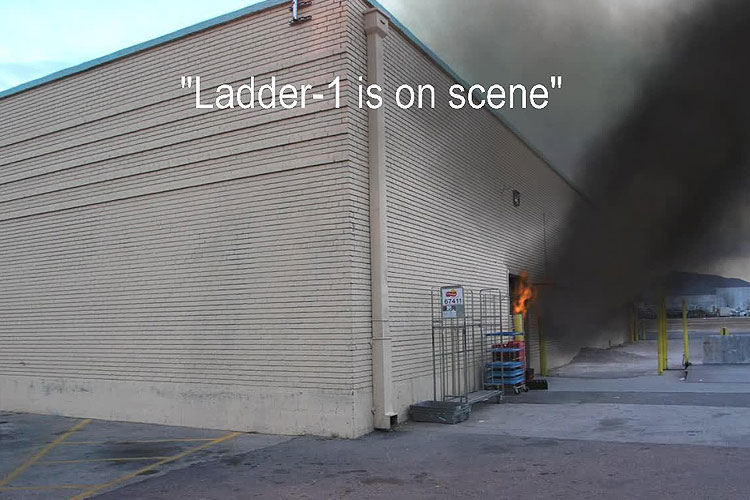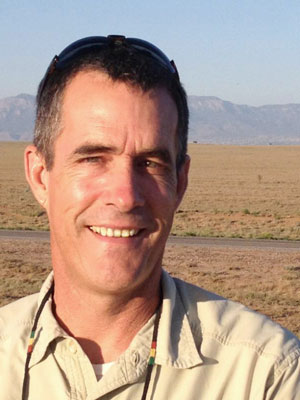

By Ted Nee
Simulations are a great tool for developing decision-making skills. They are especially effective training for “soft” skills. Soft skills are often referred to as the three Rs: Reading, Recognizing and Reacting. Reading is seeing the critical cues at an incident, things like building construction, fire dynamics, and rescue profile. Recognizing is seeing a pattern based on the critical cues observed. Finally, reacting is choosing a course of action that is likely to affect the outcome of the incident based on your prior experience with similar events. Naturalistic decision-making researcher Gary Klein describes this process as recognition primed decision making or RPMD. In order to develop these “soft skills” it is necessary to gain experience in a wide variety of incident situations. Training with incident simulations is one way to accomplish this goal.
In this supermarket fire simulation, you are the Engine 1 officer and will be first due at the incident. You are in quarters when the following dispatch comes in: “Engine 1, Engine 2, Engine 3, Ladder 1, Ladder 4, Squad 1, Rescue 1, and Battalion 1 respond to 8020 Central Avenue we have a report of a structure fire at the Fair N’ Square market. All units responding to 8020 Central Avenue be advised we are receiving multiple 911 calls on this event.”
The Fair N’ Square market was constructed in the early 1950s and is of ordinary construction. The bearing walls are of masonry construction with a wooden roof assembly. There is no access from sides Alpha and Bravo. The customers enter and exit through side Delta and stock is brought in through a roll-up door on side Charlie. The Fair N’ Square was once part of a national supermarket chain but is now a locally owned neighborhood market.
In this simulation, we will look at the problems posed by dangerous “enclosed” structures. In his book Preventing Firefighter Disorientation, retired San Antonio (TX) Captain William Mora introduces the concept of enclosed structures. These are generally large commercial occupancies that lack sufficient means of access and egress to allow for a rapid evacuation of firefighters if conditions deteriorate. Captain Mora outlines a number of firefighting tactics that make operating at these structures less risky. One tactic is to make a Cautious Initial Assessment (C.I.A.) of the incident. This involves reading the smoke conditions, identifying the building factors to determine the likely location of the fire in the building. Another of these tactics is making a “close attack” on the fire. Captain Mora’s enclosed structure tactics revolves around locating the fire and making the attack from the closest possible access point. This allows for making the shortest possible penetration into the building to avoid long hoseline stretches in the hazard zone.
RELATED: ‘BIG BOX’ STRUCTURES | UNDERSTANDING AND SOLVING FIREFIGHTER DISORIENTATION
Start the fire simulation video. You will be prompted to pause the video and give a radio report at several key points.
The first radio transmission you will provide is a standard size-up report. This radio report should include the following elements:
· Arrival on-scene
· Building area/size
· Building height (number of stories)
· Problem description
· Action being taken (assignments for the E-1 crew)
· Assume and name command
· Any resource needs
At the next point, you are asked to pause the video you are prompted to give a 360 follow-up report. This report should include:
· Presence or absence of a basement
· The number of stories from side Charlie if different from initial size-up
· Any immediate life safety or rescue needs
· Incident problems or location if different from the initial size-up
You will be prompted to pause the video and make an assignment when additional units report on scene. Practice giving assignments using the Task, Location, Objective (TLO) format. An example assignment might be: “Ladder 1 pull a second handline from Engine 1, (Task) go to the 1st floor, (Location) get an “All Clear” and check for fire extension.” (Objective)
Whe Battalion 1-1 arrives on-scene make a command transfer using your department’s standard command transfer process (if applicable).
Formulate Conditions, Actions, Needs (C.A.N.) reports for the assigned units based on the visible conditions and information provide when prompted to do so.
Finally, have Battalion 1-1 give an assignment Engine 3 using the TLO format based on the C.A.N. reports from the assigned units.
The most effective way to use the simulation is to get feedback regarding your performance (have an experienced officer or colleague critique your radio reports) and run through the simulation again, utilizing the feedback.
More fire training simulations: http://emberly.fireengineering.com/training/fire-simulations.html
 Ted Nee is a 34-year veteran of the fire and emergency services. He joined the Albuquerque (NM) Fire Department (AFD) in 1983. He retired from the AFD at the rank of deputy chief. After his service with the AFD Ted served as the lead command instructor and command training center coordinator for the Emergency Response Organization at Sandia National Labs in Albuquerque for nine years. Ted is a Blue Card Command type IV and V Incident Commander and a Blue Card Command Instructor. Ted is currently teaching Fire Studio 6 Essentials and Advance Simulation Concepts workshops across North America. Ted is the co-author of the Fire Engineering DVD “Fire Dynamics” along with Dan Madrzykowski of the Underwriters Laboratories Firefighter Safety Institute and Lieutenant John Ceriello of the Fire Department of New York.
Ted Nee is a 34-year veteran of the fire and emergency services. He joined the Albuquerque (NM) Fire Department (AFD) in 1983. He retired from the AFD at the rank of deputy chief. After his service with the AFD Ted served as the lead command instructor and command training center coordinator for the Emergency Response Organization at Sandia National Labs in Albuquerque for nine years. Ted is a Blue Card Command type IV and V Incident Commander and a Blue Card Command Instructor. Ted is currently teaching Fire Studio 6 Essentials and Advance Simulation Concepts workshops across North America. Ted is the co-author of the Fire Engineering DVD “Fire Dynamics” along with Dan Madrzykowski of the Underwriters Laboratories Firefighter Safety Institute and Lieutenant John Ceriello of the Fire Department of New York.

